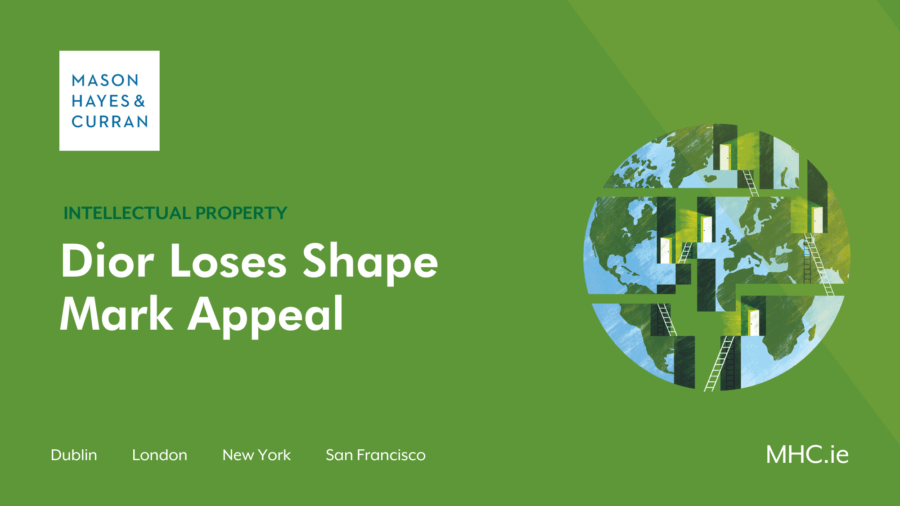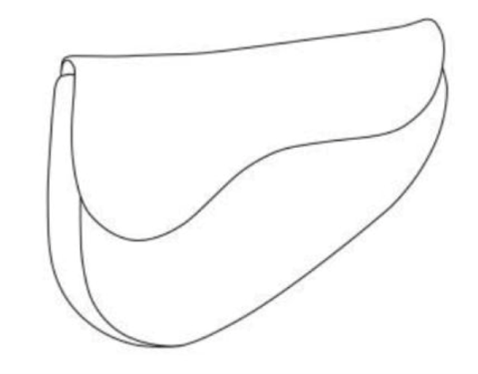
The Second Board of Appeal of the EUIPO has held recently that the iconic Christian Dior saddle shaped handbag is not sufficiently distinctive to be registered as a trade mark for bags and/or hand bags. Despite strong arguments from Dior that the shape of its bag is distinctive and departs from normal industry standards, the Board noted that bags, handbags and purses come in a wide variety of shapes. Therefore, the Board found that the shape of the Dior saddle bag is unlikely to be perceived by consumers as indicative of origin. Instead, the Board held that consumers would rely on a number of factors such as brand name and logo and that the shape mark was merely a variant of the shapes of handbags already available on the market. We consider the implications of this decision.
Background
The saddle shaped Dior bag was designed in 1999 by John Galliano as part of the Dior spring 2000 ready-to-wear collection. Since then, it has been heavily promoted by celebrities and television personalities including Jennifer Lawrence, Beyoncé and the well-known fictional character Carrie Bradshaw from the tv show Sex and the City.
Last year, Dior applied to register the below 3D shape of the saddle bag as an EUTM for various goods in Class 18 including bags and wallets, as well as sunglasses and phone cases in Class 9.

The EUTM application was refused in part, with the EUIPO Examiner holding that the shape of the bag had a functional purpose for the storage of objects. The Examiner also stated that the shape of the bag did not depart significantly from the norm. As such, it was not capable of fulfilling its essential origin function and was devoid of distinctive character.
Appeal
Dior appealed the Examiner’s decision to the EUIPO’s Second Board of Appeal. In doing so, it relied heavily on a similar case involving a Guerlain lipstick product, wherein Guerlain was ultimately successful in registering a 3D trade mark for ‘lip sticks’ in Class 3. In that case, the General Court of the EU held that there was distinctiveness in the shape of the lipstick product which it said resembled that of a ‘boat hull’ or ‘baby carriage.’
In the present case, Dior argued that similar to Guerlain, its saddle bag does have inherent or acquired distinctiveness because:
- Consumers of ready-to-wear luxury couture products show a higher degree of attentiveness than the average consumer;
- The mark looks like a riding saddle which had never been used in the fashion industry before Dior; and
- The shape is sufficiently different to other bags sold by luxury brands, citing the below examples designed by Chanel, Louis Vuitton and Hermes.

Decision
The Board rejected Dior’s arguments. Whilst it did allow Dior’s appeal regarding the Class 9 goods and some Class 18 goods, it refused registration for the mark in relation to “bags, handbags, pouches (leather goods), travel goods (leather goods)” and “toiletry and make-up cases.”
Regarding shape marks like the Dior saddle bag at issue, the Board noted that only shapes that depart significantly from the norm and customs of the sector will be regarded as having the requisite level of distinctiveness. In addition:
- It rejected Dior’s arguments regarding the level of attentiveness of the average consumer. It referenced the wide range of prices for the bags in question and that there is a variety of marketing channels pursuant to which the bags are advertised and sold, including in supermarkets.
- It noted that the bags in question are accessories. The accessories sector, it said, is characterised by a ‘multitude’ and ‘abundance’ of forms to which the public is already exposed.
- The mark applied for consists of a combination of elements of presentation which are typical of those types of goods and which do not, deviate significantly from the norm of the leather goods sector, and
- The presence or absence of a shoulder strap or handles, the slightly different shape of the flap of the bag, and the rectangular or rounded shape are not “significant” and immediately apparent to consumers.
Conclusion
Whilst the decision is undoubtedly a setback for Dior, it is unlikely to be the end of the matter. The case has now been sent back to the EUIPO to determine Dior’s separate claim of acquired distinctiveness through use of the mark. In addition, Dior may decide to appeal the decision to the General Court of the EU.
More significantly however, the case serves a reminder to brand owners of the difficulties faced in obtaining trade mark registrations for unconventional shape marks. The EUIPO Board’s decision in this case makes it clear that a simple divergence from the norm of the sector is not sufficient for a sign to be capable of trade mark registration. Rather, the difference between the sign and the norms of the industry must be significant. Against this backdrop, brand owners should be aware of the suitability of design protection for shape marks where trade mark protection is not available. Although trade mark registration offers a perpetual monopoly over the mark, a design registration , assuming the novelty grace period applies, provides up to 25 years of protection against copying and infringement. Alternatively, the Community unregistered design right will last up to three years with proof of copying required.
For more information and expert guidance on successfully protecting your company’s intellectual property rights, contact a member of our Intellectual Property team.
The content of this article is provided for information purposes only and does not constitute legal or other advice.
Share this:






